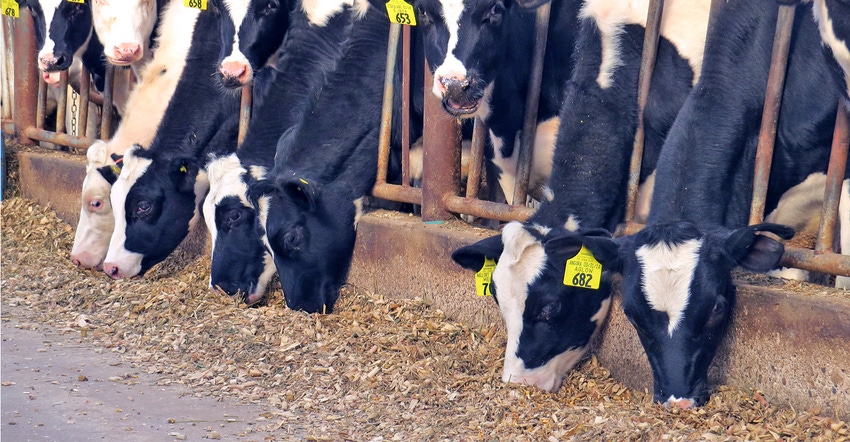
Sen. Tammy Baldwin, D-Wis., says the Senate’s 2018 farm bill includes significant improvements to dairy risk management tools as dairy farmers face difficult market conditions.
“Dairy farmers are a key driver of our state’s economy, but they are facing very challenging times. The Senate farm bill includes important reforms that will directly benefit Wisconsin dairy farmers and our rural communities,” says Baldwin, a member of the Senate Appropriations Subcommittee on Agriculture.
Senate farm bill
Baldwin says she has worked hard the past several months “to make sure the Senate farm bill includes new and improved dairy risk coverage tools to provide much-needed relief for our dairy farmers and do right by them.”
In the face of challenging dairy market conditions across the country, Baldwin sent a letter to Agriculture Committee Chairman Sen. Pat Roberts, R-Kan., and Ranking Member Sen. Debbie Stabenow, D-Mich., urging them to protect the economic security of the nation’s dairy farmers, and update and expand the dairy safety net in the 2018 Farm Bill to provide better risk management tools for family farmers.
“The bipartisan 2018 Senate farm bill includes new and improved support for dairy farmers, who have struggled from tough economic times for too long,” Stabenow says. “Sen. Baldwin’s tireless advocacy and leadership was crucial to securing this critical new investment for dairy.”
Stabenow helped secure $100 million in additional funding for the dairy title budget baseline.
Baldwin notes that since 2014, milk prices have dropped by more than a third, and dairy farmers have faced difficult market conditions without a reliable safety net. Baldwin believes the changes she recommended to the 2018 Farm Bill would fix problems with the old Dairy Margin Protection Program and provide a pathway to new, customizable insurance tools in the future.
“We can make this risk management tool for dairy farmers stronger and more affordable for smaller farmers. If you produce 2 million pounds of milk or less per year, you get a 50% discount on the premiums. If you produce between 2 million and 10 million pounds of milk, you get a 25% reduction,” Baldwin explains. “This really targets those in greatest need. Getting this in the farm bill is something I fought many weeks for.”
The farm bill reforms would:
• Allow for new opportunities for insurance. The Margin Protection Program for dairy is replaced with Dairy Risk Coverage. The measure raises the maximum covered margin to $9 per cwt and adjusts the minimum percentage of milk that can be insured.
• Respond to the costs farmers face. Updated choices for risk coverage would better reflect the costs farmers face to produce their milk.
• Increase affordability. The cost for coverage, even higher-quality coverage, would be lower. Small and medium-size farmers would get better coverage for a lower cost.
• Target those most in need. Administrative fees would be waived for beginning, veteran and underserved farmers.
• Build on farmer-friendly improvements. The dairy safety net would be responsive to drops in milk prices and increases in feed costs by triggering payments monthly. Farmers would be allowed to make changes annually, rather than being locked in to a longer commitment.
Farm bill before election?
Baldwin believes there is strong and bipartisan support for the Senate farm bill, and the chances of it passing in the Senate are pretty good, even though the bill will need 60 votes to pass.
“I certainly think it could be passed before the 2014 Farm Bill expires Sept. 30,” Baldwin says.
“Sens. Roberts and Stabenow have worked hard to put together a bill that both sides can support.”
Baldwin says she believes the House will likely pass the farm bill this fall, and that House and Senate negotiators will be able to get a farm bill ironed out and on the president’s desk to sign before the midterm election on Nov. 6.
“Since I served in both the House and now the Senate, I know it’s harder to pass a farm bill in the House than the Senate,” Baldwin notes. “In the Senate, we represent a whole state, so we have more balanced views since we represent people in both urban and rural areas. In the House, most represent people in rural or urban areas, not both.”
About the Author(s)
You May Also Like






